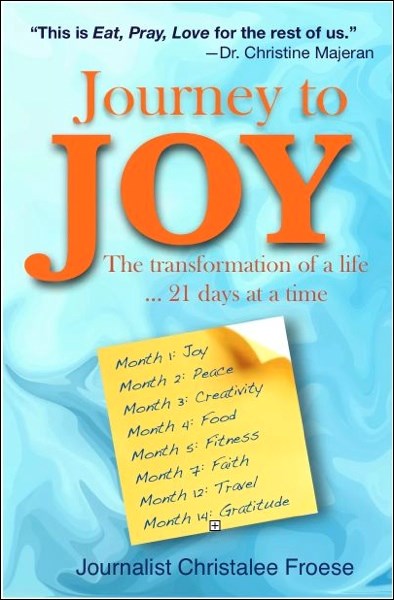By Christalee Froese
Published by Your Nickel’s Worth Publishing
$24.95 ISBN 978-1-988783-12-3
“I’ve always wanted to keep everything, do everything and be everything,” Christalee Froese explains in her book, Journey to Joy: The Transformation of a Life … 21 Days at a Time This excessive weight of taking on too much lands her in a psych ward where, as she puts it, she models hospital gowns – the ones that don’t fasten up in the back. While there, she has an epiphany.
Upon her release, Froese spends 21 consecutive days focusing on one goal, to find joy in what she does. She then spends 21 days of each succeeding month focusing on a new goal, like peace, faith, relaxation and travel. She tries her own versions of yoga poses, such as the Wobbly Flamingo and the Awkward Elephant.
When her goal focuses on pets, she cares for five fluffy newborn kittens that she repeatedly assures readers she’s not getting attached to.
Froese is supported in her recovery by her husband Lewis and young son Logan, as well as by neighbours and professionals. After a miscarriage and unable to conceive another child, she and Lewis adopt a baby girl with Down syndrome from China, a time-consuming and expensive process but well worth the effort. They name her Journey.
A self-admitted “people-pleasing junkie,” Froese writes, “I’m innately a mover, a talker and a doer. Instead of standing still, I prefer to go.” She has to learn to be still, silent and listen. Her biggest change is in her attitude, the belief that she can.
As a journalist, Froese employs the writer’s technique of repetition, like repeating references to her weight and the bathroom scale which incessantly scolds her. She gleans ideas from others and incorporates some of their strategies, inserting little post-it notes with thoughtful, inspiring quotes between each chapter.
Froese carries on amusing conversations with her inner critic, with occasional outbursts of anger. Whereas her critic can be “really nasty and foul-mouthed,” Froese writes, “I, on the other hand, would never say such things.”
Froese learns to shush her inner critic who, over time, begins speaking in a gentler voice and eventually even becomes an ally.
It appears Froese was writing as some of these events were happening, or immediately after, as she lets her feelings flow freely, unimpeded by any second thoughts. Readers can readily get the impression they’re right there with her, witnessing her steps to recovery.
The chapter endings of Journey to Joy are particularly powerful, even profound, and the final chapter ties the threads together in a way that is both illuminating and inspiring.
— This book is available at your bookstore or from www.skbooks.com



